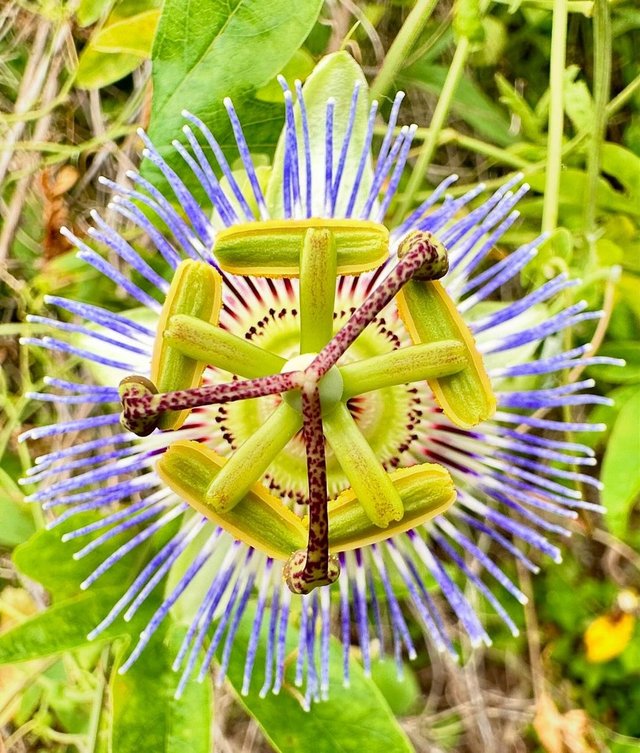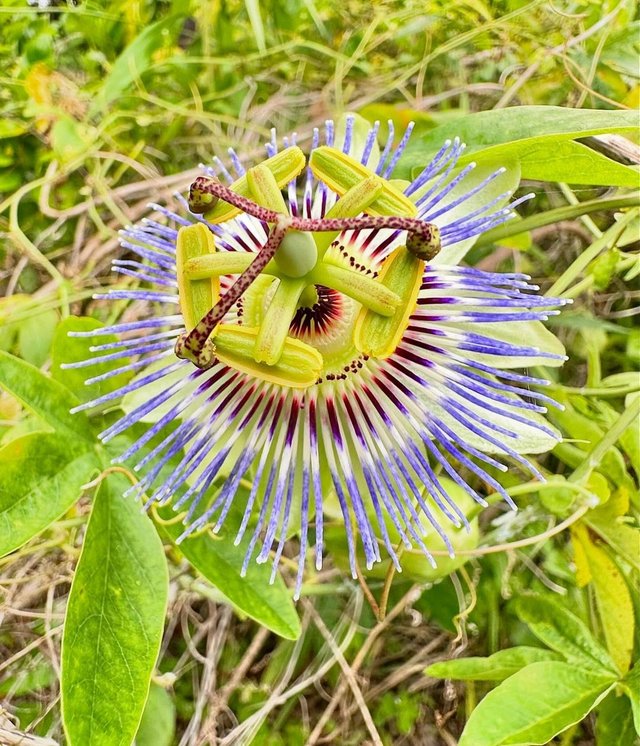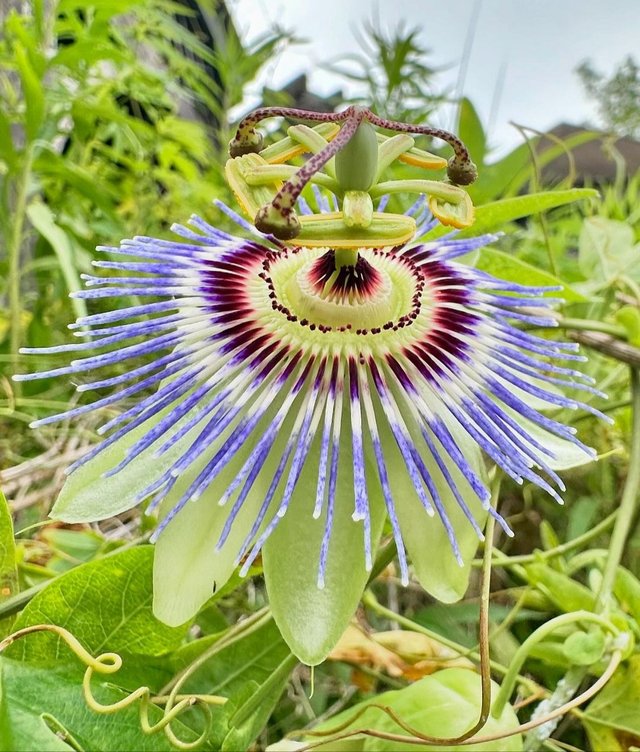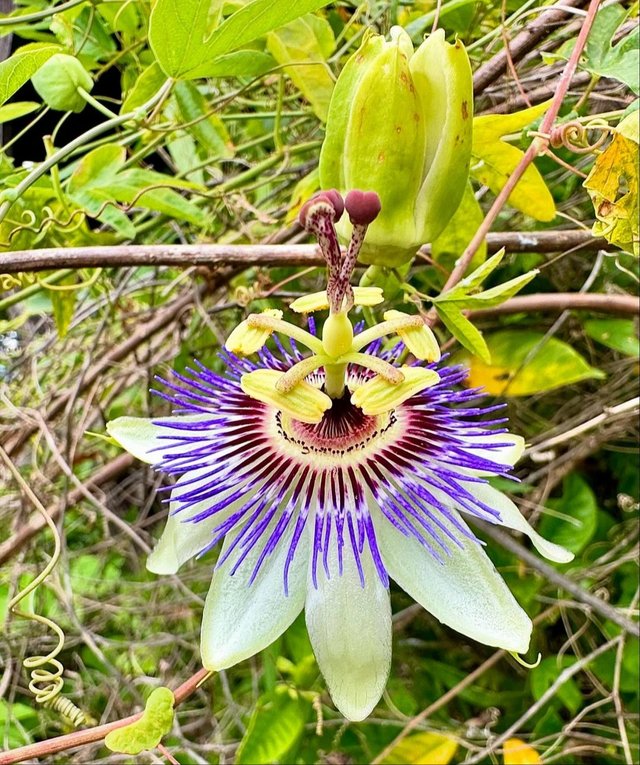Beautiful Colour Purple Passionflower
The Purple Passionflower, also known as maypop, is a perennial vine recognized for its striking, intricate flowers and medicinal properties. Native to the southeastern United States, this hardy plant has captivated botanists, gardeners, and herbalists alike with its unique beauty and versatility.
Botanical Characteristics
Purple passionflower is a member of the Passifloraceae family. It is a fast-growing vine, reaching up to 20 feet in length. The plant’s tendrils help it climb and spread over nearby vegetation or structures. The leaves are three-lobed, dark green, and serrated, providing a lush, dense foliage.
The most remarkable feature of the purple passionflower is its flowers. Each blossom is about 3-5 inches in diameter, with a complex structure that includes a central corona of white and purple filaments, surrounded by five petals and five sepals that are often tinged with purple. The flower’s intricate design, with its radial symmetry and vibrant colors, is both mesmerizing and indicative of the plant’s unique pollination strategy.
Habitat and Cultivation
Purple passionflower thrives in well-drained soils with full sun to partial shade. It is commonly found in fields, roadsides, and open woods across its native range. The plant is relatively drought-tolerant once established and can withstand various soil conditions, making it a resilient choice for gardeners.
Cultivating purple passionflower involves planting seeds or cuttings in the spring or early summer. Seeds should be scarified and soaked before planting to enhance germination. Regular watering during the initial growth phase is crucial, but once the plant matures, it requires minimal maintenance. Gardeners often use trellises or fences to support the vine’s growth and showcase its beautiful flowers.




